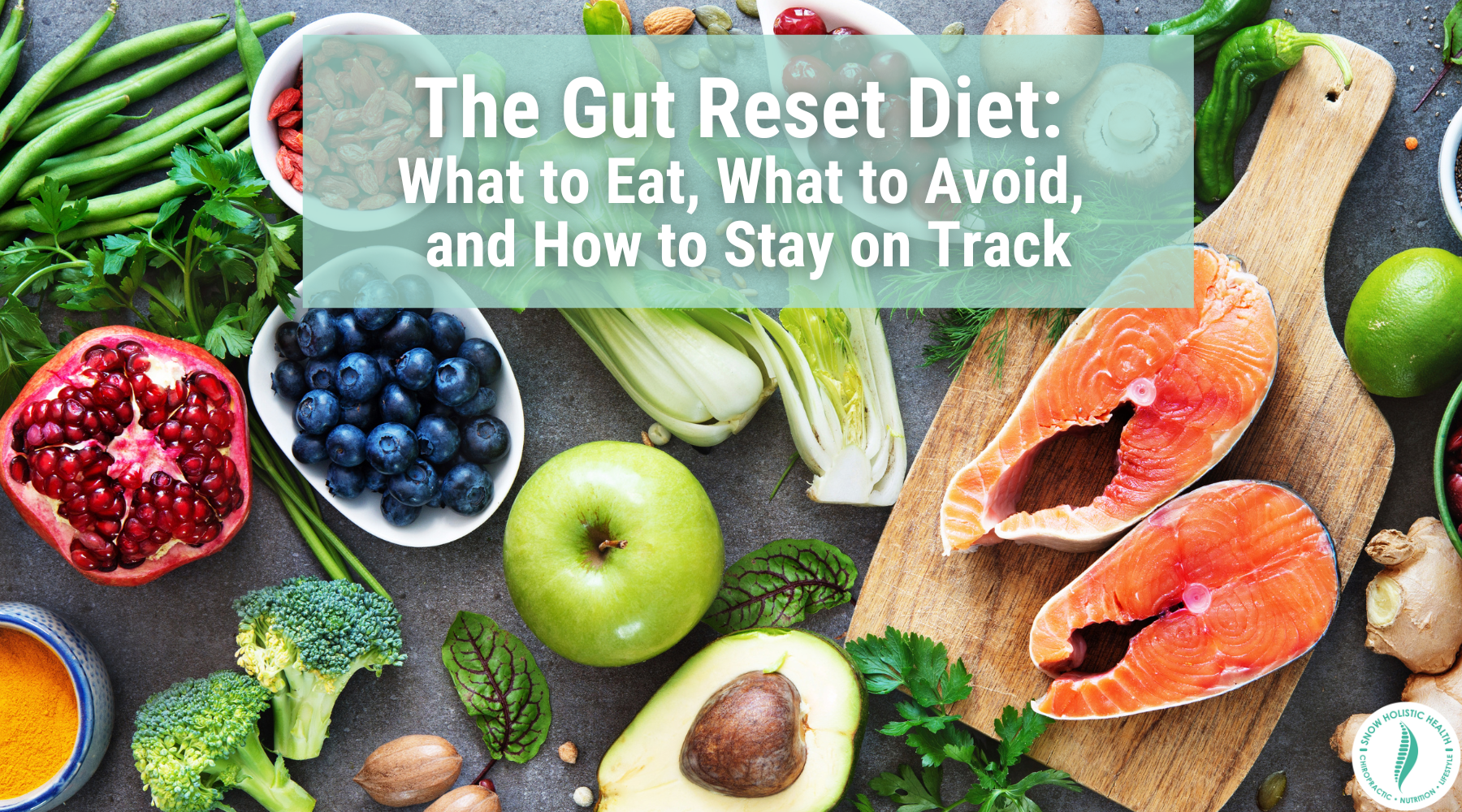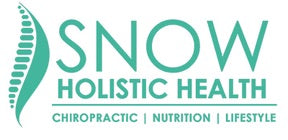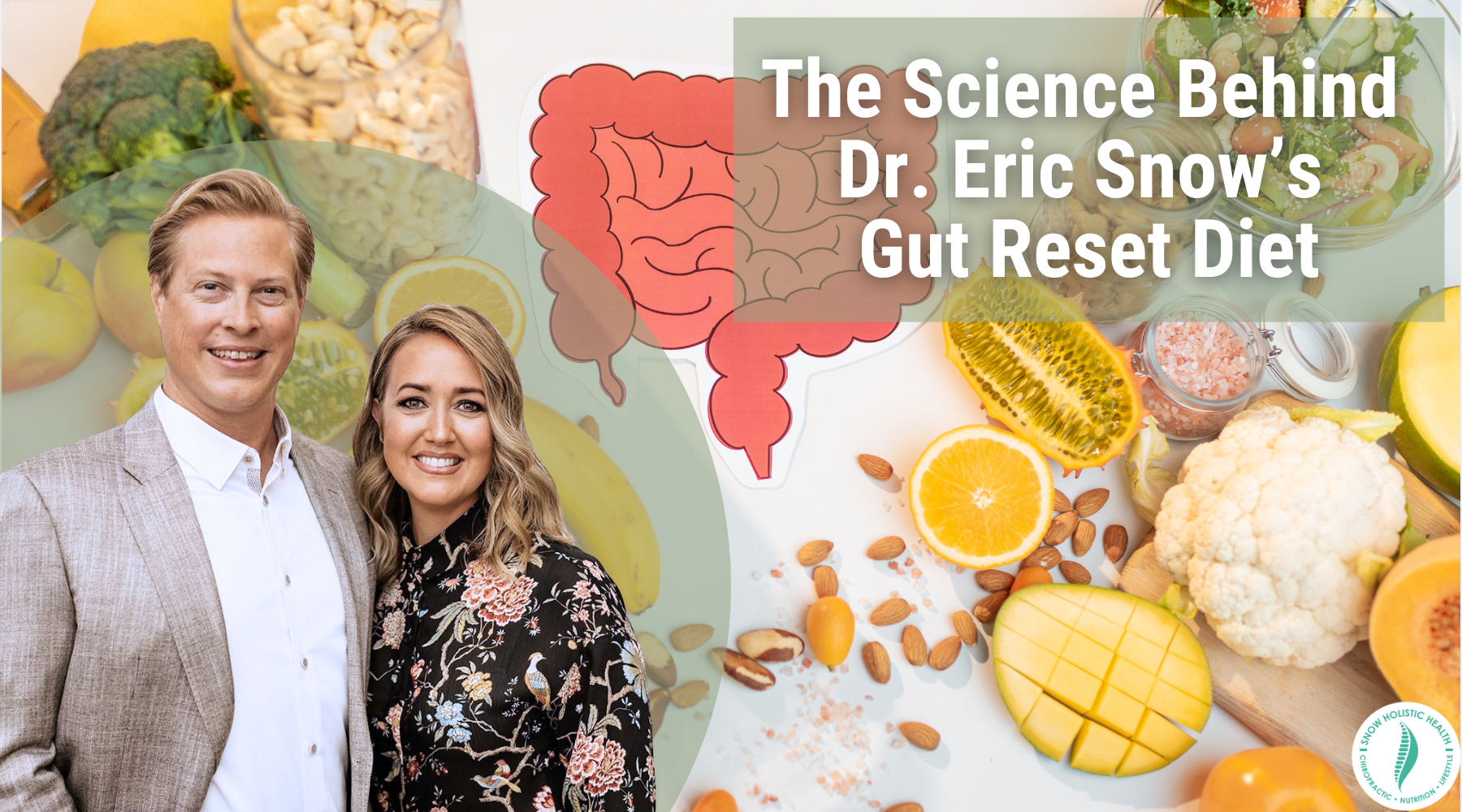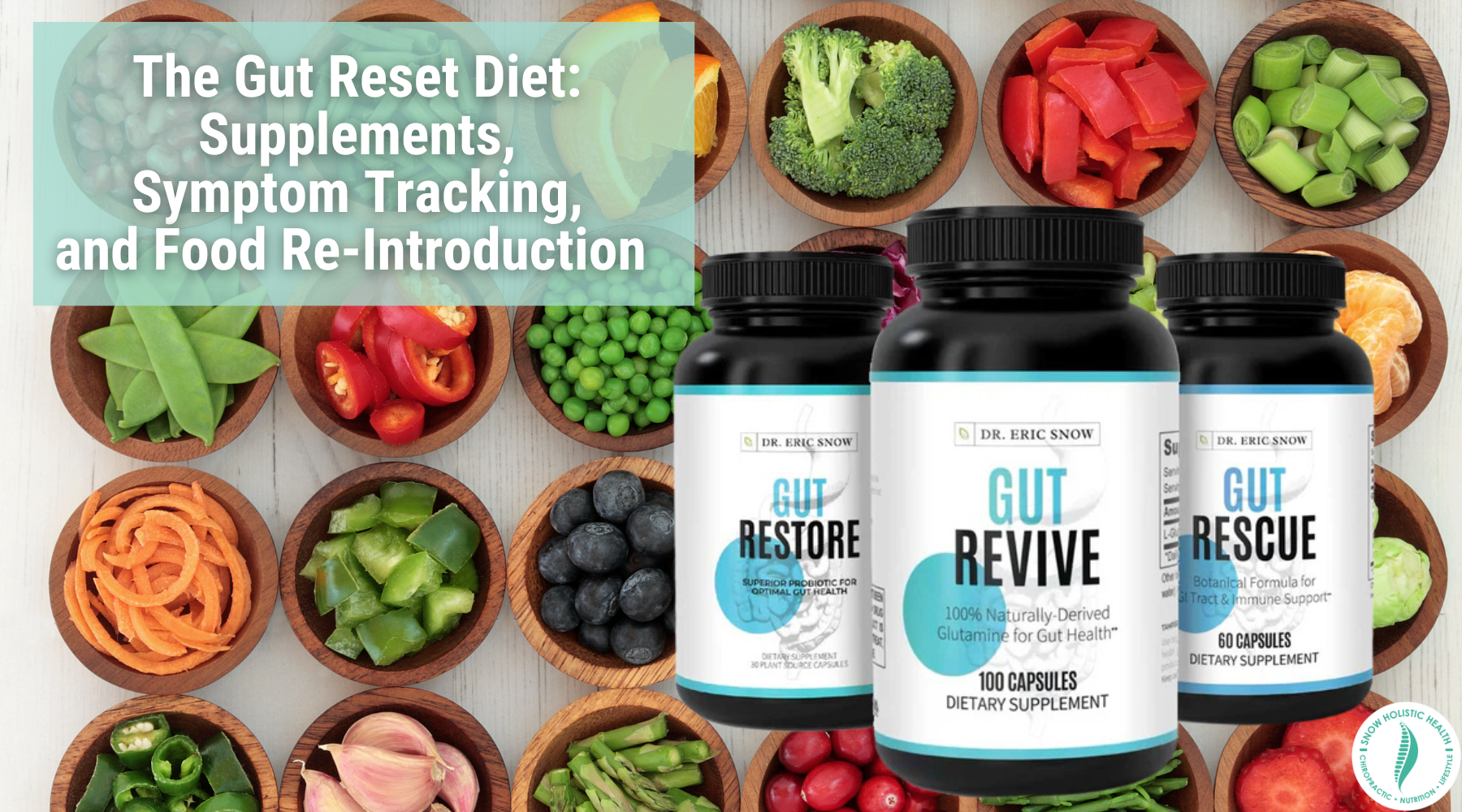The Gut Reset Diet: What to Eat, What to Avoid, and How to Stay on Track

Bloating, brain fog, exhaustion, inflammation: these are the hallmark signs of gut dysbiosis. Also called leaky gut syndrome, gut dysbiosis occurs when the bacteria, fungi, and yeasts that form our gut’s microbiome become unbalanced due to food allergies, poor diet, lack of exercise, stress, and other lifestyle factors.
When this happens, bad bacteria and yeasts like Candida albicans grow out of control, while good bacteria populations die off. The toxic byproducts and inflammation produced by the bad microbes irritate our gut lining, leading to autoimmune reactions and “gaps” in the cells that line our intestines.
These gaps allow bacteria, metabolic waste, and inflammatory compounds to escape our gut and enter the bloodstream, where they wreak havoc on our immune system, metabolism, and general health.
Luckily, gut dysbiosis isn’t a life sentence. With the right lifestyle changes, you can help your microbiome heal. Introducing the Gut Reset Diet. This accessible, 30-day lifestyle shift can help you kick leaky gut to the curb and restore your GI tract’s natural microbial balance.
At Snow Holistic Health, thousands of patients have benefited from my unique, science-backed approach to restoring the gut’s microbiome. This 30-day course is the result of almost two decades of expertise in functional medicine and nutrition. And the best part? I’m making it free.
Here’s what you can expect:
- No gimmicks
- No paywalls
- No ridiculous health fads or trendy, influencer-style “hacks.”
The 30-Day Gut Reset Diet is designed to put you and your body back in touch with what’s real. That means: real food, real science, real results.
Excited to learn more about the Gut Reset Diet and the science behind how it works? Check out part one in our Gut Reset series.
In this article, you'll learn the nuts and bolts of the Gut Reset Diet. That’s what to eat, what not to eat, how to start, plus how to stay on track for the full thirty days.
Getting Started on the Gut Reset Diet
As you start your journey toward a happier, healthier microbiome, it’s important to remember that the 30-Day Gut Reset Diet isn’t a weight loss plan. It’s a gut health lifestyle change that helps you replace harmful habits with good ones, discover food allergies, adjust your lifestyle, and “reset” the microbial environment inside your lower intestines by eliminating bad bacterial colonies and feeding good ones.
However, when you’re embarking on a total lifestyle overhaul, thirty days can feel like a long time. That’s why defining the goals, motivations, and intentions behind your decision to try the Gut Reset is so important: so you can keep going when things get tough. Remember, like a good workout routine, the Gut Reset only works if you can stay consistent and committed.
What is Your Why?
You’re more likely to stick to the Gut Reset Diet if you know your why. Maybe you’re sick and tired of feeling sick and tired, or maybe you’ve seen someone you love develop chronic conditions like irritable bowel syndrome, heart disease, or diabetes from bad lifestyle habits.
Whatever your reason for starting the Gut Reset Diet, it’s important to write it down in a dedicated place. After all, life happens. What feels obvious and powerful right now might be harder to remember when the sugar cravings hit at 3 a.m.
Start your journey by defining why you want to commit the next month to getting healthier and the changes you want to see.
Below, I’ve linked a free, downloadable copy of the 30-Day Gut Reset Diet Health Goal Setting Guide for you to fill out. Make sure to keep a copy of your completed Guide so that you can refer back to it during difficult moments throughout the month ahead. Keep it on your phone or print it out and put it in your wallet for easy access.
Download the Health Goal Setting Guide
What to Eat on The Gut Reset Diet
With diets and meal plans, it’s all too easy to hyperfixate on what you can’t eat. With the Gut Reset Diet, I challenge you to focus on the many nutritious (and delicious!) foods you can eat!
You probably already know that fermented foods like yogurt, kimchi, and sauerkraut are great for gut health. But did you know that garlic helps fight bad gut bacteria and is full of healthy, prebiotic fiber? Or that kiwi is one of the best foods for better digestion? Learn how what you eat can help–or harm!--your microbiome.
Here’s a quick guide to gut-friendly foods:
- Fruits and veggies (cooked if not tolerated raw)
- Chicken or turkey breast
- Fatty fish (salmon, tuna, herring)
- Soups, bone broth
- Cultured dairy products and dairy alternatives (as tolerated)
- Seaweeds
- Nuts and smooth nut butter
- Almond flour products (as tolerated)
- Flax, chia, other seeds (as tolerated)
- Probiotic rich fermented foods (fermented veggies, sauerkraut, kombucha, kefir)
- Natural sugar substitutes like stevia and monk fruit
- Water, hot or iced tea
Eating for better gut health doesn’t have to feel limiting. Think of it as an opportunity to explore new flavor combinations, try new foods, and learn new recipes. Even better? Get creative! Use the 30-Day Gut Reset to make healthier versions of your favorite foods.
Take a look at our Gut Reset Recipe Guide and make a list of five recipes you’re excited to try:
Download the Gut Reset Recipe Guide
When you’re trying to shift your eating habits, grocery shopping can be intimidating. You can use the Gut Reset Shopping List as a quick reference while shopping to make sure you’re stocking up on gut-healthy foods:
Download the Gut Reset Shopping List
Stay on track and prevent snacking slip-ups by mapping out your meals a week in advance. The Gut Reset 7-Day Meal Plan download below demonstrates how you can pre-plan a week of meals using gut-friendly recipes from the Gut Reset Recipe Guide.
Once you’ve familiarized yourself with foods to avoid during the Gut Reset, I also recommend making a list of local restaurants that offer gut-friendly dishes so you can eat out with friends and family–or treat yourself to a healthy lunch out.
Download the Gut Reset 7-Day Meal Plan
Are Your Favorite Foods Gut-Friendly?
While the 30-Day Gut Reset Diet requires you to temporarily eliminate processed and sugary foods to help you identify which foods “flare” your leaky gut symptoms, some foods, like dried seaweed snack packs or kale “chips” can be a Gut Reset-friendly replacement for less healthy options like pretzels and potato chips. You might discover that some of the foods you’re already enjoying are great Gut Reset meals or snack options.
Our Food Label Reading Guide makes it easy to identify which packaged foods are gut-friendly and which aren’t. Take a quick look at your pantry and try it out!
Download the Food Label Reading Guide
This video explains in-depth how to look past deceptive marketing messages on food packages and assess for yourself whether a packaged food is good for your gut.
What Not to Eat on The Gut Reset Diet
Just as important as eating the right foods during the 30-Day Gut Reset is avoiding the wrong ones. Again, the Gut Reset Diet isn’t about weight loss, it’s about healing your gut’s microbiome.
As a result, many popular diet foods, including sugar-free options that replace sugar with artificial sweeteners like xylitol and sorbitol are off-limits because these chemicals harm healthy gut microbes. However, by focusing on fresh, whole foods that feed healthy gut bacteria, you might find you lose weight on the Gut Reset anyway.
Here’s a quick list of foods you’ll want to limit or avoid during the 30-Day Gut Reset. Some of these foods are healthy, but might be difficult to digest or are common food allergy triggers. By temporarily eliminating–and then carefully re-introducing–possible problem foods, you can identify hidden food intolerances that are making you feel tired, sick, and bloated.
Foods to Avoid:
- Beans, legumes, corn
- Raw fruits and veggies with skin and seeds (if having symptoms)
- Bran, cereal or granola with nuts/fruit, dried fruit
- Greasy, fatty, spicy, or fried foods
- Lunchmeat, processed meat (hotdogs, sausage)
- Processed dairy products
- Pastries, cakes, cookies, candy, chocolate
- Sugar substitutes such as xylitol and sorbitol
- Whole-grain bread, pasta, crackers (if having symptoms)
- Tough, fatty, cuts of meat
- Brown, multigrain, or wild rice, rice pilaf (if having symptoms)
- Processed snack foods and desserts, refined carbs and sugar
- Soda, energy drinks
- Caffeinated coffee and tea (as tolerated)
- Alcohol
For the full, detailed Gut Reset Program Foods to Avoid List, click the download link below.
Download the Gut Reset Program Foods to Avoid List
Staying on Track
A lot can happen in thirty days. This is especially true when it comes to our bodies, which replace, on average, 1% of their total cells every single day. Most of that cell turnover comes down to just two types of cells: red blood cells, or erythrocytes, which have a lifespan of about 120 days, and colon epithelial cells (some of the “gut lining” cells involved in leaky gut) which typically live 3-5 days.
That means by the time you’ve finished the Gut Reset Diet, you’ve replaced your colon epithelial cells up to 10 times!
For the Gut Reset to work properly, it’s important to stay on track. Unlike a weight loss diet, where a weekly “cheat meal” can help you avoid overeating, eating outside of the Gut Reset guidelines can reactivate leaky gut symptoms and prevent you from properly identifying food allergies. This is because the Gut Reset methodology is based around the concept of the elimination diet.
Elimination diets are an established protocol for identifying food allergies and intolerances. First, a possible food allergen is completely removed from the diet for several weeks to see if symptoms lessen or disappear.
Then, the food is carefully re-introduced while you monitor for symptoms (a concept I explore in another post). If you re-introduce a possible food allergen too soon, or eat without symptom-tracking, you won’t be able to properly identify what’s causing your symptoms.
In the following video, we cover strategies to help you resist temptations during the 30-Day Gut Reset:
Need extra help? Give yourself a boost and stay positive with the 30-Day Motivational Guide.



